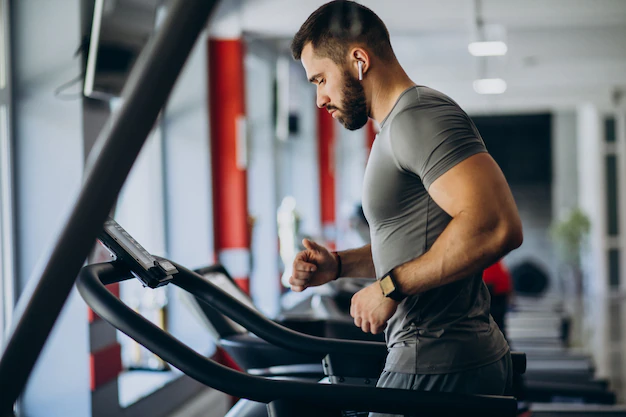Join us in understanding the how to every fourth person in the World is at risk? Are you one of them? Life is the name of movement. Stop of movement is death. Exercise, physical routines are necessary for life. Natural exercises is one of the most important causes of physical weakness and diseases.
The World Health Organization conducted in 168 countries. After the last survey, it has been said that one third of the world’s population, i.e. 1.4 billion people, do not do physical exercise as per the requirement.

Table of Contents
Which Kind of Disease Every Fourth Person in The World is at Risk?
Types of Diseases: These people are at risk of heart disease, diabetes and various types of cancer.
Mental Health: Emphasize the impact of mental health disorders like depression and anxiety on overall risk.
Contributing Factors: Explore how lifestyle choices, environmental factors, and nutritional deficiencies further compound the risk.
Importance of Awareness: Stress the significance of understanding the magnitude of these risks in addressing global health challenges.
Exercise Guidelines For People Aged 19 To 64 Years.
How much exercise should be done? To stay healthy, one should do two and a half hours of “Moderate Exercise” or 75 minutes of vigorous exercise every week. At least two days a week, one should do exercises that stretch the muscles of the body.
People who sit a lot do light exercise at different times of the day. What is moderate exercise? Brisk walking, light swimming, gentle or uphill cycling, playing tennis, mowing the garden, biking, Playing volleyball and basketball is a moderate exercise. Arts etc. are hard exercises.
Muscle Strengthening Exercise
According to the survey, in high-income countries such as the United States and the United Kingdom, the number of inactive people has increased from 32% in 2001 to 37% while in low-income countries this rate is 16%. Do not exercise. Experts say that in high-income countries the demand for leisure has increased due to comfortable jobs, occupations and commuting by car.
In low-income countries, people are more active due to difficult jobs and the use of public transport to get to work. Experts say that the government should develop a structure that promotes activities such as sports, cycling.

Exercises and Physical Activity
It is important to distinguish between exercise and physical activities for a proper and healthy life routine. Both are different from each other in terms of level and benefits and have different scopes. Activities move the body to a limited extent. While exercises require the body to move well and the capabilities of the heart and mind for this purpose. be concentrated.
Benefits of Regular Physical Exercises
Regular physical exercise has many benefits. The most important of them are:
Regular exercise improves the respiratory system. The strength to hold the breath and endurance increases. As this strength increases, the exercises become easier.
As the speed of blood circulation increases, the efficiency of the vessels also increases. Sweating during exercise helps the kidneys to remove waste from the body.
The movement of the bowels due to exercise automatically reduces the complaint of gas accumulation in the stomach. Regular exercise increases the efficiency of the lungs and stomach. The nerves that control the nerves that control sensations and movements become stronger. Regular and consistent exercise also improves blood clotting.
Experiments show that the level of red cells (hemoglobin) in the blood increases. Continuous and regular exercises increase physical strength, mental capacity and self-control. Due to this, the efficiency of the entire body increases. Below are some methods of exercise.
Ways to Exercise
Staying active while doing routine activities has a good effect on health, but regular exercise is more beneficial for health.
Consider a few examples of such exercises. If you plan to start a slightly more strenuous exercise, be sure to consult your doctor first. This is the easiest and cheapest way to exercise. Take long strides while walking. Jogging at a slower pace is the best way to keep your heart pumping. But constant running every day increases the chances of muscle and joint injuries. So, wear proper shoes and warm up before starting the run.
Gym Workout
- Muscle Growth: Strength training stimulates muscle fibers, leading to hypertrophy and increased muscle mass.
- Improved Strength: Regular training enhances overall strength, making daily activities easier and reducing the risk of injury.
- Bone Density: Weight-bearing exercises promote bone health and reduce the risk of osteoporosis.
- Metabolism Boost: Strength training increases metabolic rate, aiding in weight management and fat loss.
- Joint Health: Strengthening muscles around joints improves stability and reduces the risk of injury.
- Functional Fitness: It enhances functional movement patterns, improving performance in everyday tasks.
- Balance and Coordination: Strength training exercises engage stabilizing muscles, enhancing balance and coordination.
- Injury Prevention: Strengthening muscles and improving joint stability can help prevent injuries during physical activity.
- Mental Well-being: Strength training releases endorphins, reducing stress and improving mood.
- Long-term Health: Regular strength training is associated with a reduced risk of chronic diseases such as heart disease, diabetes, and hypertension.

Cycling is a Great Way to Exercises
- Cardiovascular Health: Regular cycling strengthens the heart, lowers resting pulse, and reduces the risk of cardiovascular diseases such as heart attack, stroke, and hypertension.
- Muscle Strength: Pedaling engages various muscle groups, including the legs, core, and glutes, helping to build strength and tone muscles throughout the body.
- Weight Management: Cycling is an excellent calorie-burning activity, aiding in weight loss and weight management by increasing metabolism and promoting fat burning.
- Joint Health: Unlike high-impact exercises, cycling is gentle on the joints, making it ideal for individuals with arthritis or joint pain. It helps improve joint mobility and reduce stiffness.
- Mental Well-being: Cycling outdoors can boost mood and reduce stress levels by promoting the release of endorphins, the body’s natural feel-good hormones. It also provides an opportunity for relaxation and mindfulness.
- Improved Lung Function: Regular cycling enhances lung capacity and efficiency, leading to improved respiratory health and better oxygen circulation throughout the body.
- Better Sleep: Engaging in physical activity like cycling can improve sleep quality, helping you fall asleep faster and enjoy deeper, more restorative rest.
Swimming
Swimming puts stress on the muscles of the body, this stress or pressure strengthens the muscles. It is also beneficial for the heart and joints of the foot. When swimming, the body does not have to lift its load, so it is suitable for people who are obese and pregnant women. It is also a good exercise for those who suffer from back and joint pain.
